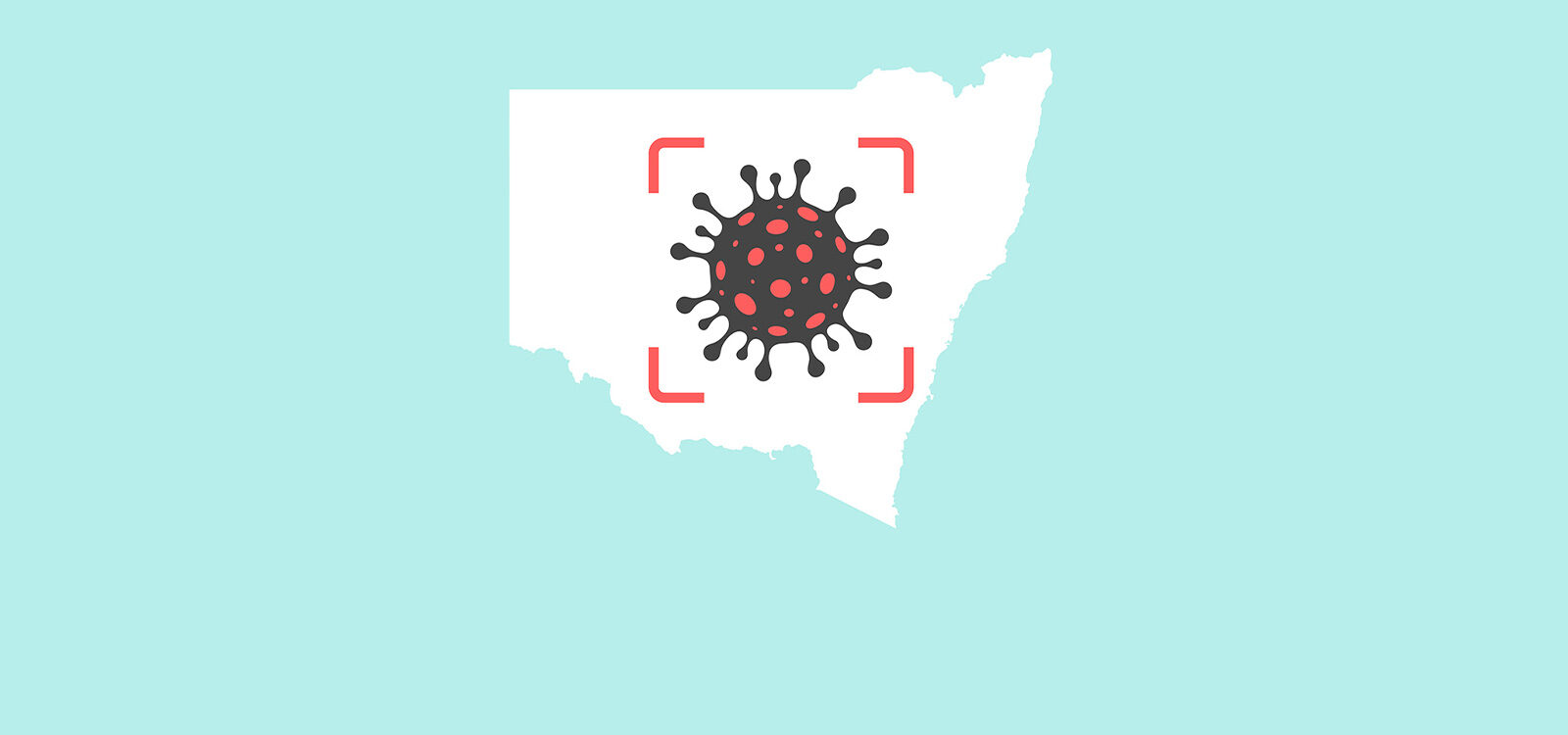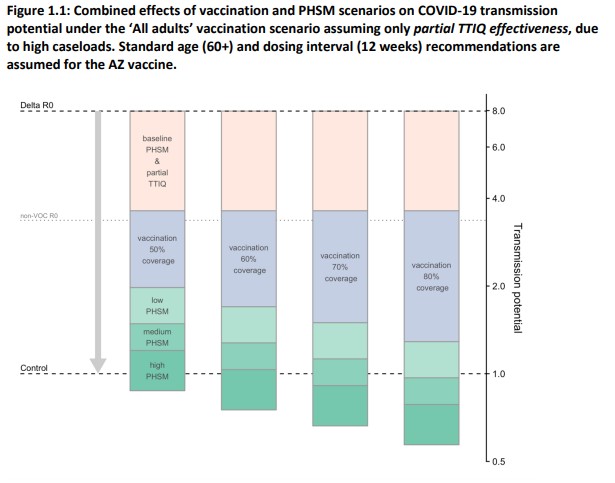
How can we stop the NSW COVID-19 outbreak growing?
The COVID-19 outbreak in New South Wales continues to grow despite a gradually tightening lockdown. The current doubling time is about 11 days, meaning that my simple model is projecting 1,000 cases a day by the end of August. It seems the only way out is vaccination. How much vaccination?
The Doherty Institute modelling suggests that 60% full vaccination coverage of the adult population is needed to stop this NSW outbreak continuing to grow with the current level of restrictions, and 80% full adult vaccination coverage before growth would stop even with restrictions eased back to those that were in place in August 2020 (open restaurants, gyms and cafés, but with wide spacing and generally no more than 100 people in any one venue). On current vaccination rates in NSW, that 80% level would occur in the middle of November 2021.
The Doherty Institute officially modelled vaccination rates for the Australian government in this analysis here. The key diagram is this one:
 This shows how all the various measures for restriction of a virus can be combined to bring the transmission potential under 1 – i.e. each infected person infects fewer than one person. It starts with a R0 (the number of people each person will infect, on average, without any restrictions) of eight (at the top end of estimates for the Delta variant) and looks at the various measures that can be taken to bring the transmission potential down.
This shows how all the various measures for restriction of a virus can be combined to bring the transmission potential under 1 – i.e. each infected person infects fewer than one person. It starts with a R0 (the number of people each person will infect, on average, without any restrictions) of eight (at the top end of estimates for the Delta variant) and looks at the various measures that can be taken to bring the transmission potential down.
The key message to note is how much of the heavy lifting is being taken by things other than vaccination, even in the 80% (of the adult population) coverage scenario. The reduction in the Rf from 80% vaccination coverage is only 2.3 of the 7.0 reduction to get from 8.0 to 1.0. To get the Rf below 1.0, even with that level of vaccination, we still need quite substantial levels of restriction in people’s movements – equivalent to NSW in August last year.
In NSW on 14 August, 27% of the adult (over 16) population has been fully vaccinated, and 52% has received at least one dose. On the scale in the graph above (see below for the calcs), that suggests that right now, vaccination might be reducing the R0 by half of the 50% coverage in the diagram – i.e. around 0.7. The Doherty simulations are clear that with a delta variant, even 50% full adult vaccination coverage is not enough to reduce the Reff to under one without more restrictions than NSW has at the moment.
- Baseline PHSM & partial TTIQ – this is NSW’s level of restrictions in March 2021 – lots of people working from home, masks on public transport, but people could gather indoors if they followed the 2sqm rule – one person per two square metres. It also assumes that contact tracing and case quarantine (TTIQ) is only partially effective once an outbreak takes hold, which is what we are seeing now in NSW
- Vaccination coverage – the blue section of each bar shows the effect of each level of vaccination coverage of the adult population (AZ, taken 12 weeks apart, two weeks after the second dose) – to translate these coverages to the whole population 50/60/70/80 become 40/48/56/64 % of the total population.
- PHSM – low medium and high, for Australians, these are different levels of lockdowns that have occurred in different states.
- Low is NSW in August 2020 (4 sq metre rule, limited gatherings indoors, generally up to 100, e.g. my theatre performance was 25% full).
- Medium is NSW in early July 2021, with restaurants, cafes, hairdressers gyms etc closed, and indoor gatherings (such as weddings, funerals) stopped, but no real restriction on shopping, please work from home if you can
- High is Victoria in August 2020 (curfews, substantial reduction even in essential work, exercise and essential shopping limited to within 5km of your house
The key message to note is how much of the heavy lifting is being taken by measures other than vaccination, even in the 80% adult coverage scenario.
Some aspects of this modelling that I will return to:
- Any outputs you see from the Doherty Institute modelling of hospitalisations, ICU admissions and deaths, are done on the assumption that there are zero cases at the beginning. If we have 1,000 cases a day (or more) when we get to 80% adult vaccination rates, then the hospitalisations, ICU admissions and deaths will be much greater while the outbreak is brought under control
- The Doherty Institute was given the assumptions about vaccine efficacy against transmission by ATAGI. On first glance, they seem optimistic compared with the UK modelling.
- The modelling also assumes that NSW March 2021 restrictions and contact tracing bring the Delta Reff down from 8.0 to 3.6. The modelling was mostly completely before the NSW outbreak, but given how fast the NSW outbreak has spread, this assumption may need another look.
|
This article was originally published on Jennifer Lang’s blog ‘ActuarialEye‘ on Monday 16 August. Read the full post here. |
CPD: Actuaries Institute Members can claim two CPD points for every hour of reading articles on Actuaries Digital.






